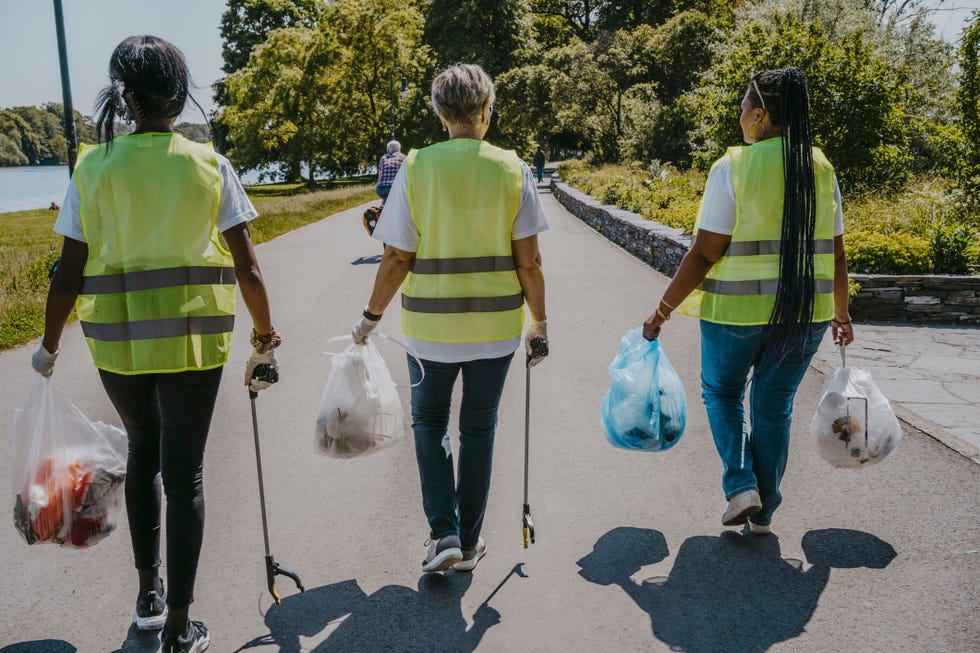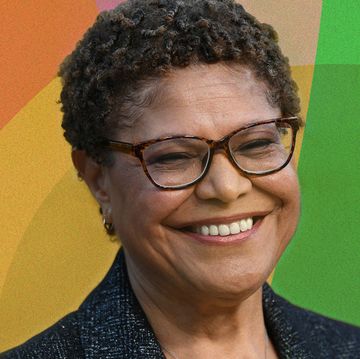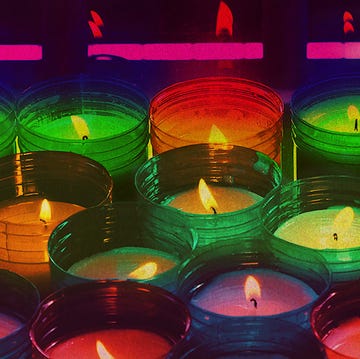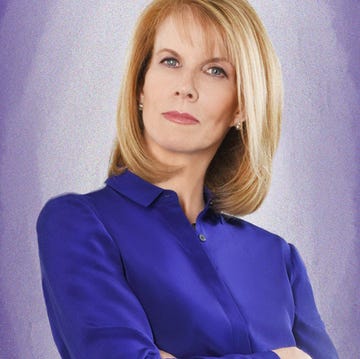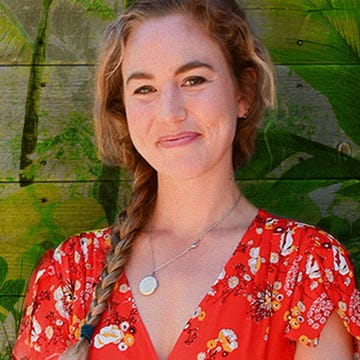When someone mentions philanthropy, for many people it conjures images of wealthy families endowing universities or bestowing large checks for evening gown-worthy events. Less normalized is the idea that giving time or resources in the name of doing good is a part of everyday life for many people around the world. In fact, a 2020 British study found that about 30 percent of respondents had ambivalent or negative views of philanthropists, and less than half actually trusted that philanthropists would “do what is right with their donations.”
Indeed, headlines have enhanced the perception that philanthropy is both the domain of the super-rich (think Bill Gates and Warren Buffett) and a veil of benevolence over corporate wrongdoing — a virtuous Band-Aid to cover an ugly wound.
The reality, however, couldn’t be further from the truth. True philanthropy takes different forms: There’s financial giving, which depends on lower-figure giving as well as those headline-worthy big checks (more on that later). Donated resources aren’t just limited to money — plenty of people donate material possessions and physical spaces in the name of philanthropy. There’s also philanthropy that relies on donations of time and skills to animal shelters and organizations like Habitat for Humanity. Indeed, the number of ways to get involved are myriad, but even so, in the last two years, philanthropy has taken a punch.
Jane Wales, the vice president of the Aspen Institute, says that the pandemic has shifted what philanthropy looks like on a broad scale. According to research by the Lilly Foundation, 20 million families stopped giving, and there’s been a commensurate decrease in volunteering. Wales believes that the financial upheaval of the pandemic may be to blame. “It could be due to financial insecurity; it could be due to the global financial crisis [or seeing] retirement savings shrink,” she says. “But there was no return to giving when the market bounced back. And there is no ready explanation for the drop-off in volunteering.”
Wales hypothesizes that the pandemic led people to turn inward and that, perhaps, the need for more work to make up for the financial deficit caused a lack of time for volunteerism. Yes, there was a massive surge in racial-equality donations after George Floyd’s death, but while the importance of that support can’t be stated enough, the share of those donations going toward social justice fell from 51 percent of total donation volume in June 2020 to just 5 percent in December. As a report noted, it’s a trend “that we see repeated all too often when a problem is no longer perceived as acute by the news cycle.”
Those stats can be disheartening, but Wales offers some hope, stating that the philanthropy of the pandemic may have become more localized and community-driven, in which case data doesn’t always account for smaller acts of support and less-documented activities. “The pandemic meant a reduction in formal volunteering but an increase in spontaneous organizations and groups,” she says.
A survey conducted by Stanford University that studied patterns of giving and volunteering bears this out. It found that people were not just supporting nonprofits but offering what Wales calls “acts of generosity.” She says, “This would be like taking in family members in need.” Those more personal philanthropic acts are not traditionally accounted for, which means that new measurements are needed to really gauge our behaviors.
So, what does philanthropy look like? And what should it look like?
Hahrie Han, a professor of political science at Johns Hopkins University and the director of its SNF Agora Institute, says that we need to overcome the belief that philanthropy is “unreachable.” She says, “We think of it as only valuable if it’s large. Small-donor opportunities can be helpful as well.” She points to churches, nonprofits, and community groups as frequent beneficiaries of lower-scale giving. “That’s a big part of how a lot of people contribute to their community,” she says. “A lot of grassroots organizations have extremely small budgets, from faith institutions to neighborhood clubs. People making what we think of as small donations can make a difference in their budget — even something like $100 for a train ticket to bring in a speaker. Little amounts don’t get headlines, [but] Americans, in general, are generous in giving both time and resources.”
Han also emphasizes that physical service actually offers benefits beyond paying bills. “Working in the community garden is more important than the money to hire a professional gardener,” she says. “It demonstrates the social bond and [builds] community, consequently going beyond the task at hand [and creating] a sense of common purpose.”
One of the challenges, then, is making sure that the communities most in need get those benefits. “It doesn’t always go to the neediest communities, which are most disconnected from the social network,” Han observes. That means taking a close look at how philanthropic resources get distributed. “Sometimes you have to put trust in communities, empower them to make choices about directing resources,” she says. “I’m always most interested in organizations grounded in people. I’d love to be able to call the executive director and ask when was the last time they directly interacted with those they service. Can they answer [the question] ‘Who are my people?’”
How can we make philanthropy part of our lives?
Nathan Dietz, a senior researcher at the University of Maryland’s Do Good Institute, which seeks to educate college students on how to make effective change, maintains that part of the shift in philanthropy comes from changing time lines for young people. “Young adults are less likely to achieve traditional markers,” he says, referencing employment, home buying, and childbearing. “Giving and volunteering among young adults declined with [these] milestones.” One likely reason is student debt. “It’s hard for young people to connect to the community if they need to spend more time at work and have less time to build and establish connections,” he says.
However, Dietz also points to the less-documented aspects of giving that actually increased during the pandemic as a sign of hopefulness. “If you’re helping somebody, that’s philanthropic behavior. What is philanthropy besides giving your resources?” he asks, even while acknowledging that it’s hard to quantify and gather data on this kind of assistance.
Dietz cites raising awareness through organizations like GivingTuesday in order to help promote the idea of smaller-scale philanthropy. Timed to coincide with Thanksgiving and the usual start of holiday shopping, GivingTuesday aims to remind people of the importance of giving to the greater good as well as to those on our individual lists. “If we’re focusing on spending money, why not give to others?” Dietz asks. He also references GivingTuesday CEO Asha Curran for her idea that the impulse of being generous is something we should try to cultivate; in fact, the organization’s site now promotes #GivingEveryTuesday, weekly opportunities for contributing, which reinforces that need exists year-round, not just on the holidays.
Addressing the ongoing needs for philanthropy takes many forms. Some people create giving opportunities in lieu of gifts for events like birthdays, graduations, and anniversaries through social-media sites like Facebook or making individual donations to organizations with personal meaning, such as donations to a hospital where a loved one was treated. Another option to contribute, as outlined by the charitable site Giving What We Can, is seeking out funds that function like an investment fund to distribute donations where they are most helpful. Some of these include Effective Altruism Funds, GiveWell, and Founders Pledge. No matter how giving occurs, checking an organization’s record of use — how much goes to overhead versus service — can decrease concerns about allocation. Sites like Charity Navigator and GuideStar are good resources for background research.
What can we do?
So, you’re ready to get involved but don’t know where to start? Here are some tried-and-true tips to start your philanthropic journey. Remember that no amount of time or donation is too small — it’s all about taking that first step and sticking to it.
- Donations are always appreciated but not always possible. Recognize that even a small amount, however, is helpful, especially for smaller, community-based organizations.
- Consider what talents you can offer to local groups, such as graphic design, facility repairs, and social-media maintenance. Then research, strategize, and come up with a plan for both the short- and long-term for how you can implement your knowledge and expertise into already established goals.
- Speaking of social media, follow accounts that promote worthy causes and offer information on how to make donations and support your communities. Charity: Water advocates for clean drinking water worldwide, Change.org raises awareness for everything from world crises to LGBTQ issues, and Pencils of Promise seeks to equalize education for children around the world.
- Explore possible philanthropic workplace benefits. Many companies now match charitable donations or offer paid volunteer days. Check with your place of employment to see if your company offers these benefits, and if it doesn’t, consider initiating the process to make it part of company policy.
- Find time to support efforts that promote your values. Weeding in a park, shelving books at a library, and working at a polling place on an election day are a few ways to make a difference with a couple of hours of service.
- Don’t forget random acts of kindness: paying for someone’s parking meter, picking up litter in a local park, holding the door open for someone. These small moments add up when it comes to spreading an attitude of giving and compassion.
Madeleine Deliee writes, teaches, and parents in the Washington, D.C. area. She's written for Playboy, CNN, The Washington Post, SyFy Wire, and many other unrelated outlets. She sometimes tweets about mostly geeky stuff at @MMDeliee.
Get Shondaland directly in your inbox: SUBSCRIBE TODAY


